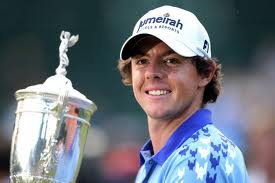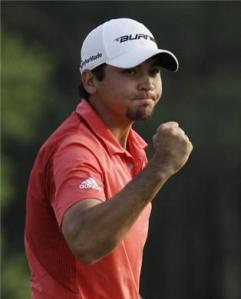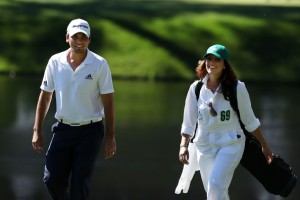Story of the Year
The biggest story of 2011? Rory McIlroy’s runaway victory at the U.S. Open. Here’s my take on golf’s darling prince back in June.
—
Long before Rory McIlroy had his breakfast on Sunday of the 2011 U.S. Open, the coronation parade had begun. A pedestrian—by his standards—third round 68 had given the fresh-faced 22-year-old an eight shot lead on one of golf’s biggest stages.
Pundits, peers and spectators all came to the realization that McIlroy—who owned just two other professional victories—was to be crowned by the time Father’s Day turned into “Father’s Night”.
They were right.
The legendary performance untapped a limitless potential that has people curious about what else McIlroy is capable of.
After shattering eleven U.S. Open records, including lowest four-day total at the tournament with a 268 (-16), natural comparisons have been made to Tiger Woods. Woods previously shot a 272 (-12) at Pebble Beach during the 2000 U.S. Open to unleash a remorseless 15 stroke victory margin.
It was in 1997 when a 21-year-old Woods eviscerated the golf world with a 12-shot romp at Augusta National. The similarities are certainly prevalent, but here’s where they differ.
It took Woods 10 attempts to secure another major championship trophy on his mantle (The 1999 PGA Championship). For McIlroy, it could be a month away. In taking three weeks off from competition, he’ll be able to put into perspective the magnitude of his accomplishment. The gifted Northern Ireland native will be able to celebrate with family and friends, and then hopefully return for a tune-up tournament before the British Open on July 14-17.
In the last two majors of 2010 and at Augusta National this year, McIlroy flirted with what would ultimately be his destiny, winning a major championship. Last year, at St. Andrews, McIlroy torched the course for a first round 63, to lead the field. A second round 80 nullified his progress, and despite rebounding to finish in a T-3, he was never really in contention down the stretch.
At the PGA Championship at Whistling Straights, McIlroy crept into the hunt on Friday evening. He entered the final round just three shots back, but a missed 15-footer on the 72nd hole to keep him out of a playoff with Bubba Watson and eventual champ Martin Kaymer.
This year’s Masters further solidified McIlroy’s place as a recurring figure in major championships. However, a well-documented collapse that included a triple bogey on the 10th hole and a final round 80 dashed any hopes of victory.
Flash forward to the 2011 British Open, and there’s no doubt that McIlroy is the favorite. With a newly minted resolve and the exorcism of past major blunders, he’s primed to wipe the field clean. If there’s one trophy McIlroy wants more than any other, it’s the Claret Jug. He grew up idolizing the mystique and rich history of the championship, and knows the how prestigious it is to hear his name called by Peter Dawson, chief executive of the R&A. An ever-improving field can challenge McIlroy, but if he gets the momentum of an orange, white and green crowd behind him, it might as well be a foregone conclusion.
McIlroy has proven that his game is suited for a variety of layouts and conditions. The doses of success at each distinct major championship, coupled with his U.S. Open breakthrough mean that he could one day be knocking down Ol’ Grand Slam’s door. But, can he compete under the microscope? Graduating from Boy Wonder to Superman in the blink of an eye can reveal unforeseen obstacles and added pressure. Being No. 1 comes with a bull’s eye, and if McIlroy is ready to take on a deep and talented mosh pit of opponents, then he’ll be the target for a long time.
Mentally, McIlroy will also have to deflect detractors and stay composed through the brewing media cauldron that he’s cooked up. Fortunately, he has already experienced both ends of the spectrum—agonizing defeat and the numbing joy of success. 
McIlroy has a devastatingly powerful swing, and a fearless vision behind his putter. While he’ll be great for a long time, it will be fun to dissect his achievements with that of Woods. He’s still got a long way to go before he truly reaches the discussion. For now, it’s about enjoying the moment. Next, it’s about legitimizing his first major win with another. Which, may be sooner than we all could have thought.
-Anthony Stipa




